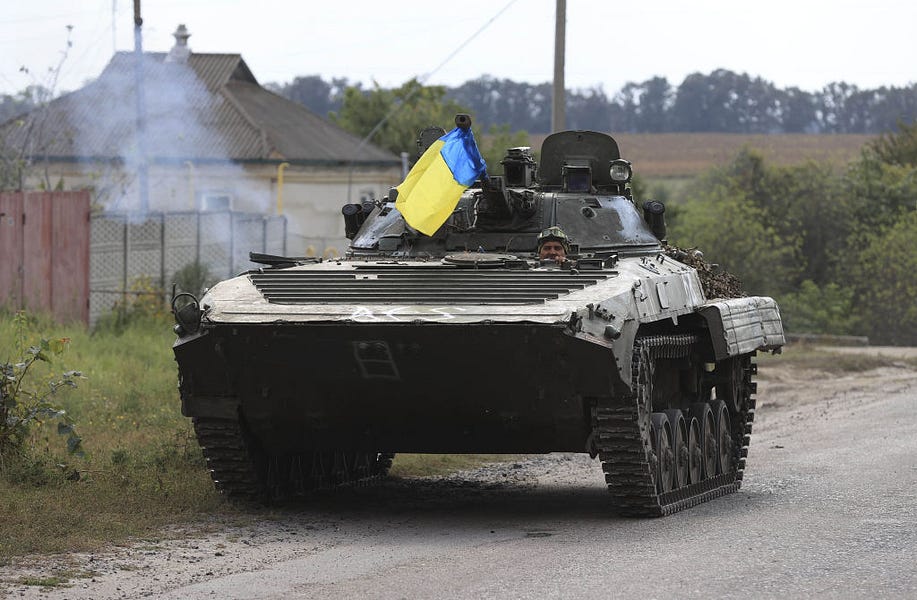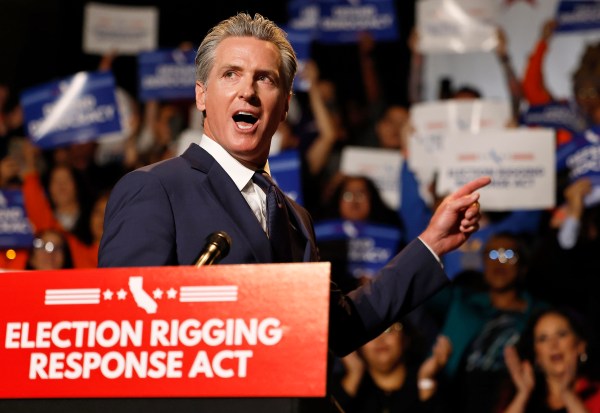When the Russian effort to conquer the entirety of Donetsk oblast in eastern Ukraine sputtered to a halt six weeks ago, the focus on Ukraine turned toward the “southern counteroffensive” and the city of Kherson, the major Black Sea port on the west bank of the Dnipro River. The Ukrainian government reinforced this narrative. The Ukrainian army used newly acquired U.S. HIMARS and similar systems to strike the major bridges and lines of communication across the Dnipro, Russian railroad junctions, and ammunition depots. It attacked facilities in Crimea, driving Russian beachgoers to panicked flight. The Russian army rushed reinforcements to the area, even risking the entrapment of larger formations against the river.
Last week, the Ukrainian army began a widespread series of attacks along the width of the Kherson front, which runs more than 100 miles from Zaporizhzhia in the north to the southern suburbs of Kherson. In some spots, Ukrainian units crossed the Inhulets River, which flows roughly parallel to the Dnipro before joining it about 30 miles east of Kherson. More imaginative Western analysts thought they saw the beginnings of a “Kherson pocket” and the encirclement of multiple Russian divisions.
What they did not see—and, more importantly, the Russians did not see—was a second attack on another front. In the last few days, a large Ukrainian formation launched a substantial attack southeastward from the northeastern city of Kharkiv that threatens the Russians’ position in the Donbas. The attack has completely wrong-footed the Russian army in the area, which had been thinned out to bolster the lines near Kherson. These units—low-quality and poorly trained—are showing signs of complete breakdown. At minimum, the local Russian command lacks either the manpower or the firepower to quickly restore a coherent defense.
As of this writing, the Ukrainians have penetrated Russian lines by 30 miles or more, liberating about 20 towns. It appears that the armored “spearhead” of the attack may have involved as few as 15 tanks, but these were supported by mechanized infantry and well-coordinated fires. But this is also a testament to how flimsy the Russian defense lines were and, almost certainly, how poorly trained and motivated the defenders were; one constant of the war has been videos of captured Russian positions that were badly designed, badly built, and full of filth—all hallmarks of indiscipline and sloppy fieldcraft.
Thus far in this campaign, the Ukrainians have executed a remarkable strategic deception, operational surprise, and tactical break-in. The misdirection of attention toward Khersonnotably corresponds to Vladimir Putin again shuffling his commanders and apparently asserting more direct control over battlefield decisions; the Russians are really starting to fumble about in the dark. While we don’t know the full extent of the Ukrainian maneuvers, it is clear that the appearance of a sizable concentration of artillery and ground maneuver units is an extremely clever bit of military operational art.
Also intriguing will be whether the Russians again try to shift their limited supply of useful reserves—say, by yanking units away from Kherson to stem the tide surging east from Kharkiv. That would be time-consuming and dangerous: The Russians would have to move most of their forces over long distances by rail, exposing them not only to Ukrainian fires but Ukrainian irregulars and placing yet another burden on Russian logistics and command arrangements.
In sum, it begins to look that the roles of puppet and puppet-master are reversing; the Ukrainians are starting to pull the strings and the Russians to do the dancing. It is hard to see how Moscow can regain the initiative in a timely way. Putin remains in “special operation” mode, hesitating to mobilize while the forces he has nurtured over 20 years have been slowly eviscerated. His purchases of Iranian drones and (reportedly) North Korean artillery shells are expedients, not how a great power plans to conduct a war. Who knows for sure how the Russian economy is doing, but what is certain is that Putin has not been able to translate oil and gas rubles into substantial new combat capability unless he can somehow get Chinese help.
If the Russians have “culminated,” the Ukrainians almost certainly have not, absent a cut-off of American weaponry. The Ukrainian government and command has husbanded its resources carefully and employed them with extraordinary skill. In the course of the war, Ukraine’s armed forces have developed a unique approach, which resembles a 21st-century update of the “Hutier” or infiltration tactics developed by Germany in the late stages of World War I, employing small squads of infantry operating with great initiative and independence while avoiding the effects of heavy artillery barrages. Having ridden out the worst the Russians have to offer in the Donbas, the Ukrainians now have increasing advantages in ranged and precision fires and enough traditional rocket and tube artillery to supplement that at decisive points.
Ukraine has also demonstrated remarkable discipline, a trait that now may be even more sorely tested by the taste of victory than it was in the original defense of Kyiv and Kharkiv. No doubt, Ukrainians are thirsting to inflict a defeat that carries the promise of full sovereignty and secure independence, but the value of their strategic patience is now making itself plain.
Kyiv’s Western partners also need patience with the pace the Ukrainians have set for themselves, while also finding in it a sense of urgency to sustain not only the current level of arms transfers but to create new counteroffensive options that can make a truly war-winning difference. The Ukrainian military has made the most of limited amounts of front-line systems and constrained capabilities, but until it can better control its skies, take and hold territory boldly as well as stealthily, further enable initiative-seeking commanders and otherwise add to its growing combined-arms expertise, the pace of victory will be slowed and the path to it uncertain.
The United States can make this the moment when the previous “Ukraine can win” proposition becomes a “Ukraine will win” prospect. The Biden administration has traveled a long road from Kabul to Kyiv. It must now press on, not only to restore Ukrainian sovereignty and liberty but to revive the world’s faith in American power and principle.






Please note that we at The Dispatch hold ourselves, our work, and our commenters to a higher standard than other places on the internet. We welcome comments that foster genuine debate or discussion—including comments critical of us or our work—but responses that include ad hominem attacks on fellow Dispatch members or are intended to stoke fear and anger may be moderated.
With your membership, you only have the ability to comment on The Morning Dispatch articles. Consider upgrading to join the conversation everywhere.